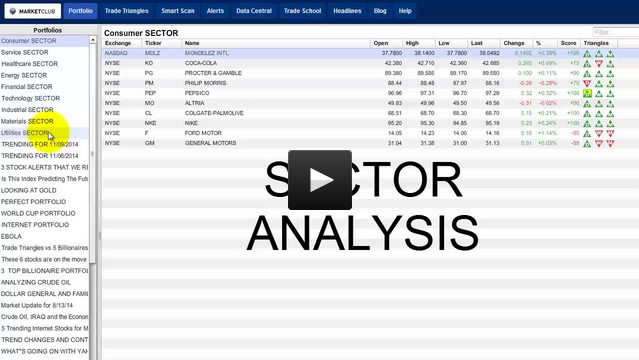After an eventful year, corporate America's crème de la crème is set to kick off the second-quarter earnings season.
The performance of banking majors, such as JP Morgan Chase & Co. (JPM), Wells Fargo & Company (WFC), and Citigroup, Inc. (C), which are scheduled to report on Friday, July 14, would be indicative of the overall health of the economy. Their numbers, specifically deposit flows and loan growth, might impact the share prices of regional banks, which attracted much-unwanted attention earlier in the year.
As the economy seems to be finding its way into calmer waters with a greater-than-expected moderation of inflation, before we discuss the outlook for the trio of major banks ahead of their earnings release, for the uninitiated, here’s a brief recap of upheavals they had to live through and work their way around over the past year.
How We Got Here?
As the “transitory” inflation in the aftermath of the beginning of the armed conflict in Ukraine morphed into a not-so-transitory and vicious feedback loop that resulted in decades-high inflation, the Federal Reserve and other major central banks chose to respond with aggressive interest-rate hikes.
While the increased borrowing costs took the wind out of the sails of an overheating economy, it resulted in significant markdowns in the “ultra-safe” long-term U.S. Treasury securities in which many of the regional banks had invested their mushrooming deposits of cash, mostly received as stimulus during the pandemic.
However, as the going got tough for various businesses amid increased borrowing costs, the banks’ clients began to dip into their deposits. In such a scenario, to meet its payment obligations, the banks’ mark-to-market losses rapidly crystallized into realized ones.
Consequently, Silicon Valley Bank (SBV) announced that it booked a $1.8 billion loss, and the chaos and panic triggered by its failure wiped out a combined $52 billion in the market value of JP Morgan Chase & Co. (JPM), Bank of America Corporation (BAC), Wells Fargo & Company (WFC), and Citigroup, Inc. (C).
Credit Suisse and First Republic Bank became two other casualties, which JPM and UBS proactively absorbed.
The banking turmoil proved to be teasers to a similar, but orders of magnitude larger, scare. As the U.S. Treasury looked set to exhaust its ‘extraordinary measures’ to manage the national debt by June 5, the world’s richest economy, which also issues the global reserve currency, was projected to run out of cash and fail to meet its obligations, until the self-imposed debt ceiling was raised or suspended.
With the extent to which the U.S. and global economy could be undermined if the default comes to pass deemed by treasury secretary Janet Yellen an “economic catastrophe,” it is not difficult to understand why business leaders, such as JPM Chief Jamie Dimon, convened a ‘war room’ over the debt ceiling standoff.
However, calmer and more rational heads prevailed in Washington, D.C., albeit at the eleventh hour. President Joe Biden and House Speaker Kevin McCarthy reached an agreement to suspend the current $31.4 trillion statutory debt ceiling until January 1, 2025, in exchange for discretionary spending caps for six years.
Where Are We Now?
Post the shakeups, all 23 banks successfully weathered the Federal Reserve’s annual stress test toward the end of the last month. Even in a severe recession scenario simulated in the test, the banks were able to maintain minimum capital levels, despite $541 billion in projected losses for the group while continuing to provide credit to the economy.
Given the endurance and resilience that was successfully displayed, an indication of lighter capital requirement resulted in banks, such as JPM, WFC, The Goldman Sachs Group, Inc. (GS), and Morgan Stanley (MS), using resources freed up to payout higher dividends to their shareholders.
JPM will lift its quarterly dividend to $1.05 a share from $1, while WFC will hike dividends to $0.35 from $0.30. Moreover, both banks have said that they have the capacity to repurchase shares. Despite an increase in minimum capital requirement from 12% of risk-weighted assets last year to 12.3% after this year’s test, C’s board has also approved a dividend increase from $0.51 per share to $0.53.
The stocks have gained over the past month, given the demonstrated staying power and the potential windfall for the shareholders.
The (Probable) Road Ahead
For the second quarter of the fiscal year:
JPM’s revenue and EPS are expected to increase by 32.1% and 37.7% year-over-year to $39.12 billion and $3.80, respectively.
WFC’s revenue and EPS are expected to increase by 22% and 39% year-over-year to $20.07 billion and $1.14, respectively.
C’s revenue is expected to increase by 8.3% year-over-year to $19.35 billion. However, its EPS is expected to decline by 38.7% over the prior-year period to $1.41.
While the outlook seems largely optimistic, some analysts have warned that large banks' earnings have peaked with continued declines in net interest incomes, normalization of credit costs, and increased expenses due to inflation.


